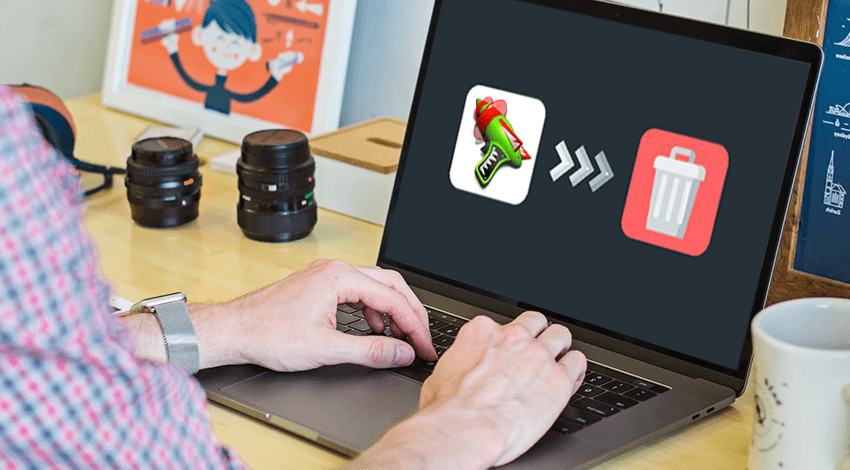Keeping a Mac in shape requires regular cleaning of unused applications that pile up on the hard drive. Even though app uninstallation in the Mac ecosystem is a fairly straightforward process, it is far from being perfect.

New users might find it difficult to navigate through distant directories in which pieces and bits of apps, widgets, and plugins reside. Given that unlike Windows OS, macOS does not have a dedicated uninstaller, the task of removing unneeded software from a computer can be rather intimidating for those Apple aficionados who are not exactly tech literate. It has to do with the fact that by simply moving an app to the Trash, it is not possible to get rid of it entirely. Upon installing, each app spreads its digital roots that occupy multiple folders scattered across different directories. Thus, the task of locating system and cache files for the deletion becomes a long and arduous quest. There is also an additional challenge of distinguishing between app and OS files. By removing the latter, it is possible to substantially compromise the performance of a Mac.
The aforementioned challenges necessitate the use of third-party app uninstallers. AppZapper is one out of many such utilities. Unlike its free and paid competitors, AppZapper allows removing unneeded apps in one swooping move. The neatly implemented drag-and-drop feature of the app is universally loved by Mac owners who don’t have the time to manually comb through the Application folder. However, just like with any other app, there might be a need to delete AppZapper.
This article will provide you with easy-to-follow steps for deleting the uninstaller from your Mac. Use an approach you like the most to completely remove the utility from the system.
Delete AppZapper: Manual Approach
The manual approach to deleting AppZapper requires the use of an administrator account. Therefore, make sure that you have administrator privileges prior to removing the uninstaller. To this end, type in your administrator password when logging to your Mac. Then, you have to quit AppZapper and its hidden processes. Once the application has stopped running, you can remove it by using the following steps as a guide:
- Quit the app by making a right click on its icon in the Dock;
- In a pop-up window, select the Quit option;
(If the utility has stopped responding, just use the Cmd + Opt + Esc combination to force quit it. In a window that opens, highlight AppZapper and click on the Force Quit button).
It has to be borne in mind, however, that although the application has been deactivated, some of its processes are still running. Therefore, you have to stop the app’s processes via the Activity Monitor. To this end:
- Open the Activity Monitor through the Utilities folder that is located in the Applications folder (alternatively, use the Spotlight search to find it);
- From the View menu, select the All Processes tab;
- Locate AppZapper and highlight processes associated with it in the list;
- Click on the Quit Process button to deactivate the processes (if it doesn’t work, use the Cmd + Opt + Esc combination to force quit the AppZapper-related executable code).

Now that you have quitted AppZapper and deactivated all of its processes, it’s time to get rid of the utility by moving it into the Trash. To do so:
- Open the Finder;
- Proceed to the Applications through the Go menu;
- Use the search field to find the uninstaller;
- Drag it to the Trash (alternatively, use the Cmd + Del combination).
The deactivation of AppZapper’s processes and the relegation of the utility to the Trash is only the first phase of the uninstallation process. Now you get why the app is so useful, right? The second phase of the process requires the manual removal of all files belonging to the utility. Use the Finder to locate miscellaneous system and cache files created by AppZapper. All you need to do is:
- Open the Finder;
- Proceed to the Go to Folder through the Go menu;
- In the search field, enter the following: ~/Library/Preferences/;
- Look for any files or folders that have AppZapper in their name;
- Select necessary items and move them to the Trash;
- Repeat the previous step in the following folders: ~/Library/Preferences/, ~/Library/Application Support/, ~/Library/Caches/.
After all bits of the software are removed from your Mac, it is imperative to empty the Trash. This can be done by right-clicking on the Trash icon, which is located in the Dock, and selecting the Empty Trash option. A crucial caveat is that it is necessary to make sure that you haven’t deleted anything necessary.
Get Rid of AppZapper: Software-Based Approach
If a conventional approach is too bothersome for you (let’s be honest: it might be too arduous for many of us), you can always fight fire with fire. Employ a more extreme method of removing the app— use of a third-party uninstaller. Such software exists for the sole purpose of tracking down and deleting stray files and folders associated with apps from the Mac system. Therefore, there is no better way of ensuring that all remnants of AppZapper are gone than by resorting to the help of special uninstalling software.

